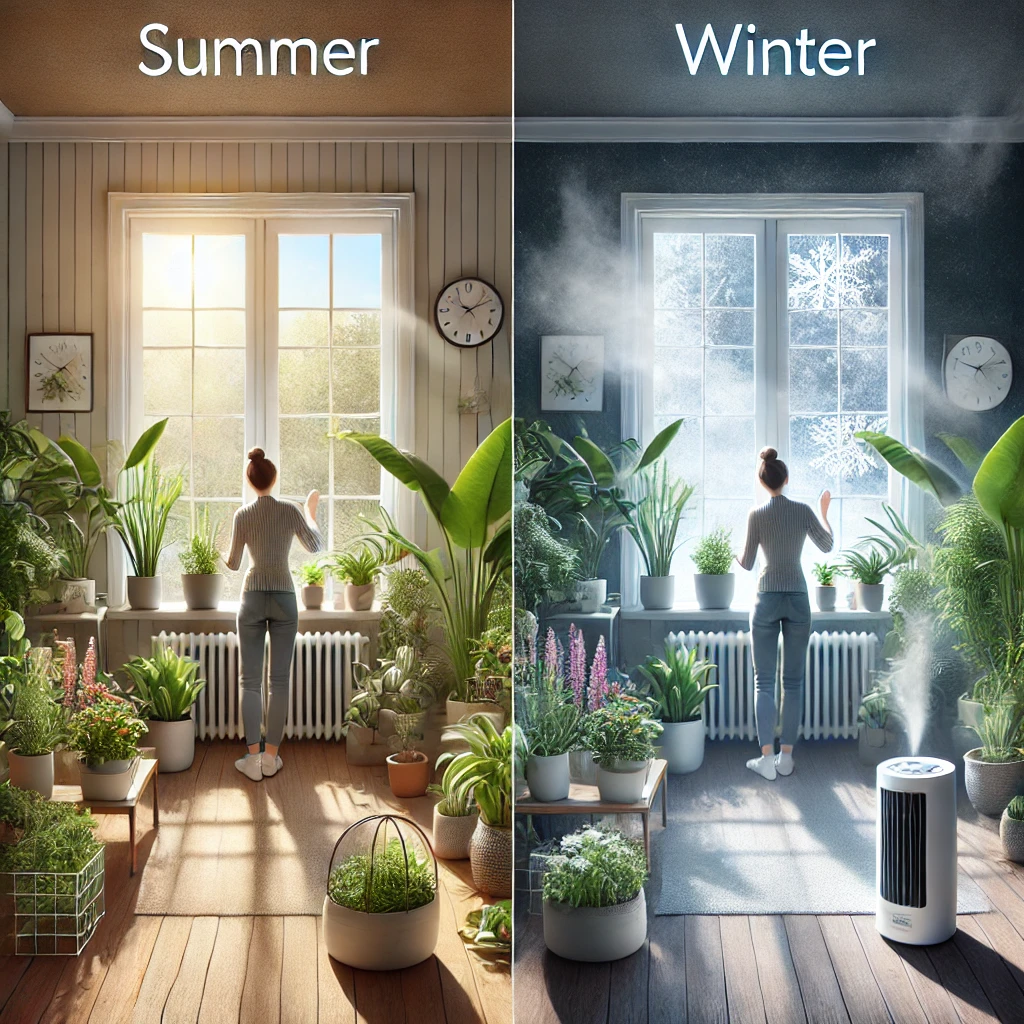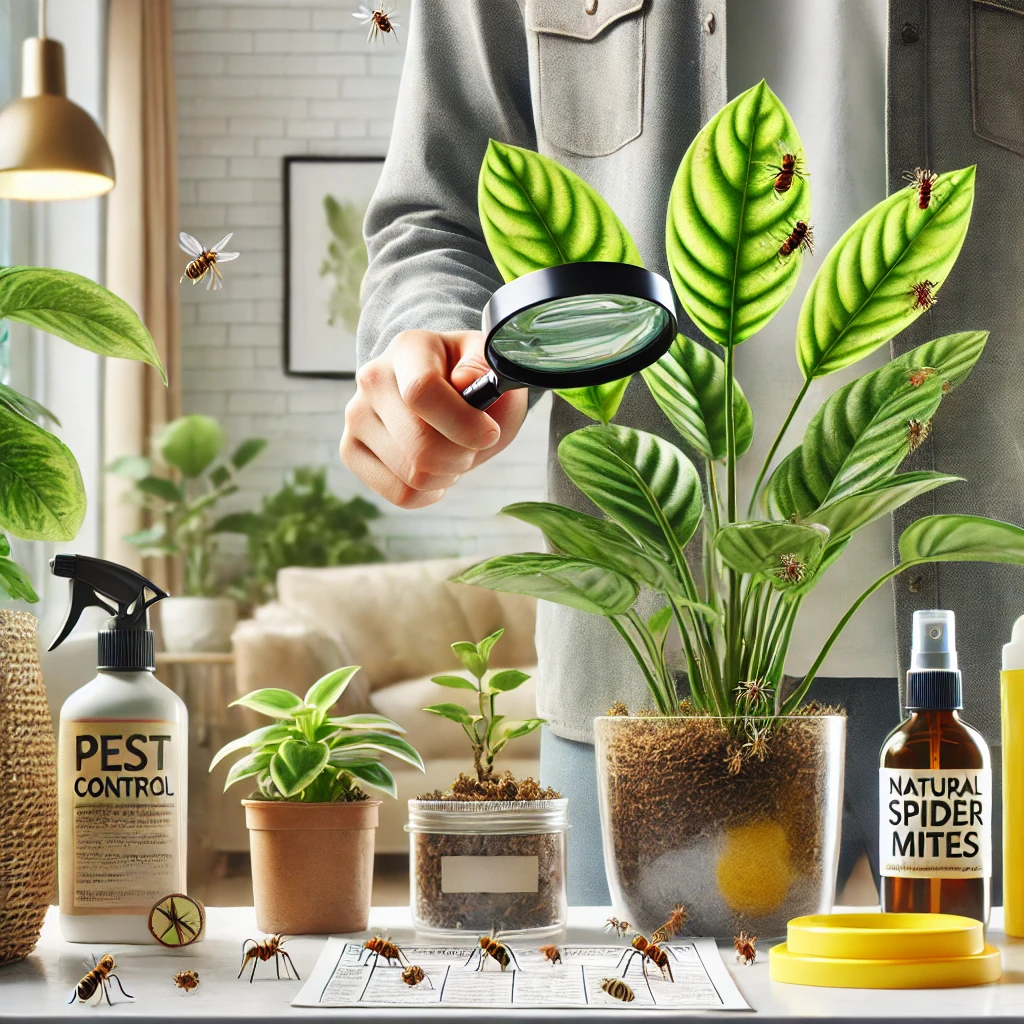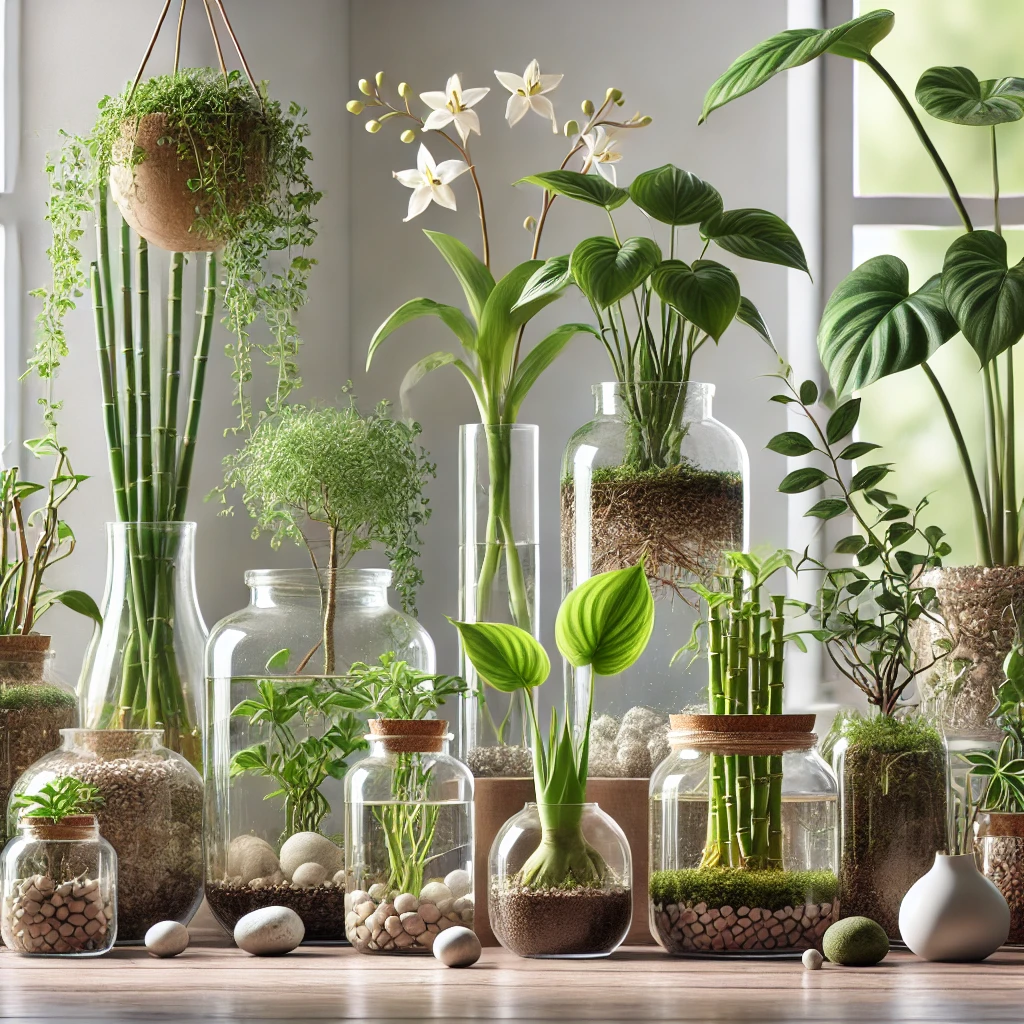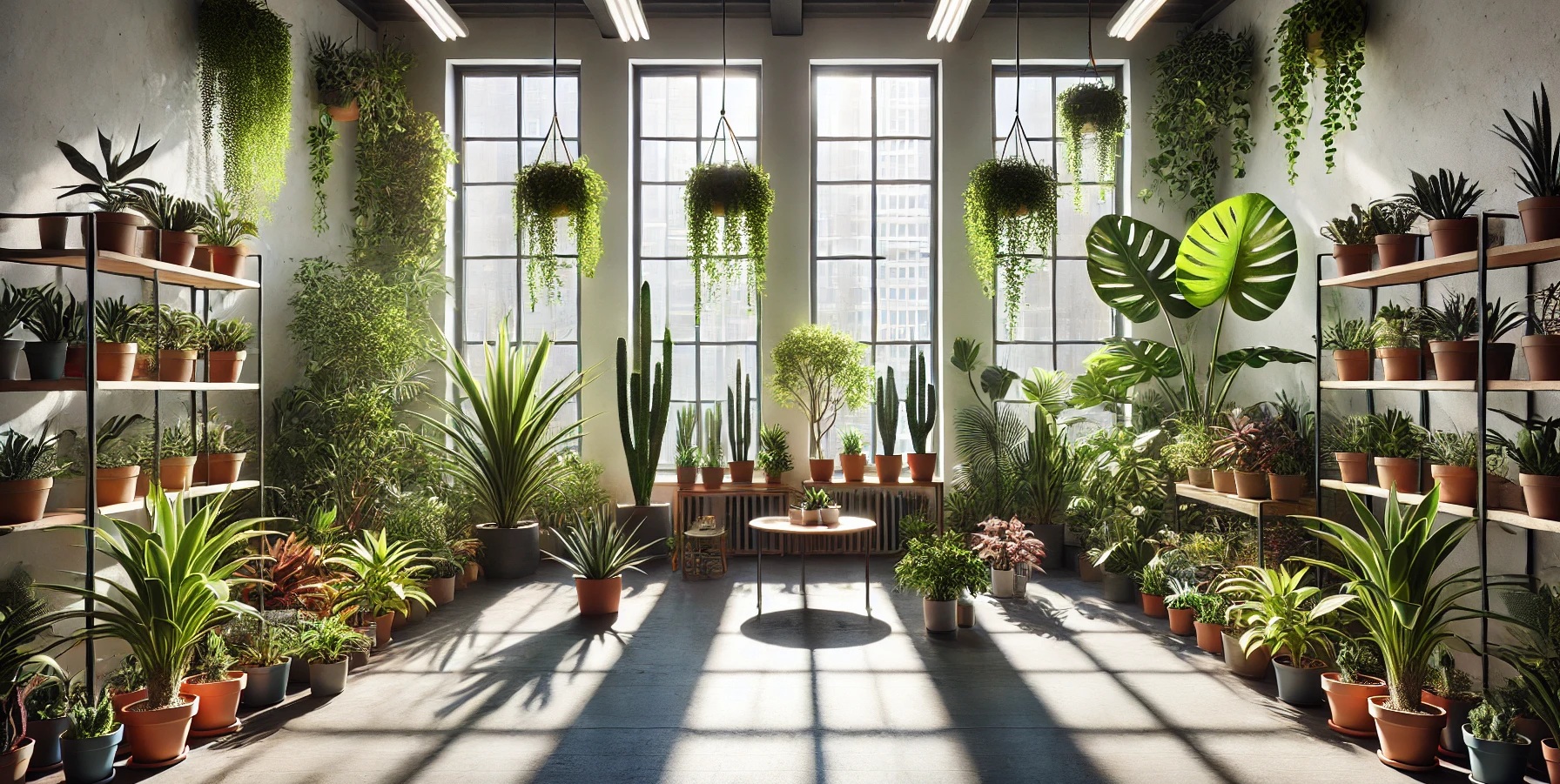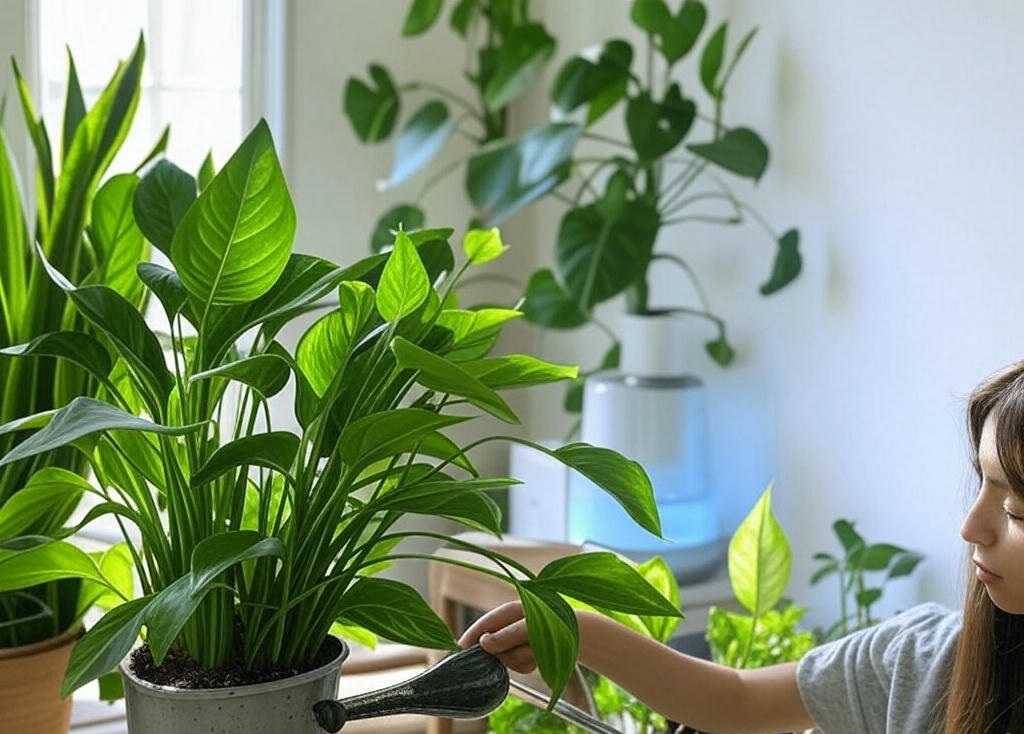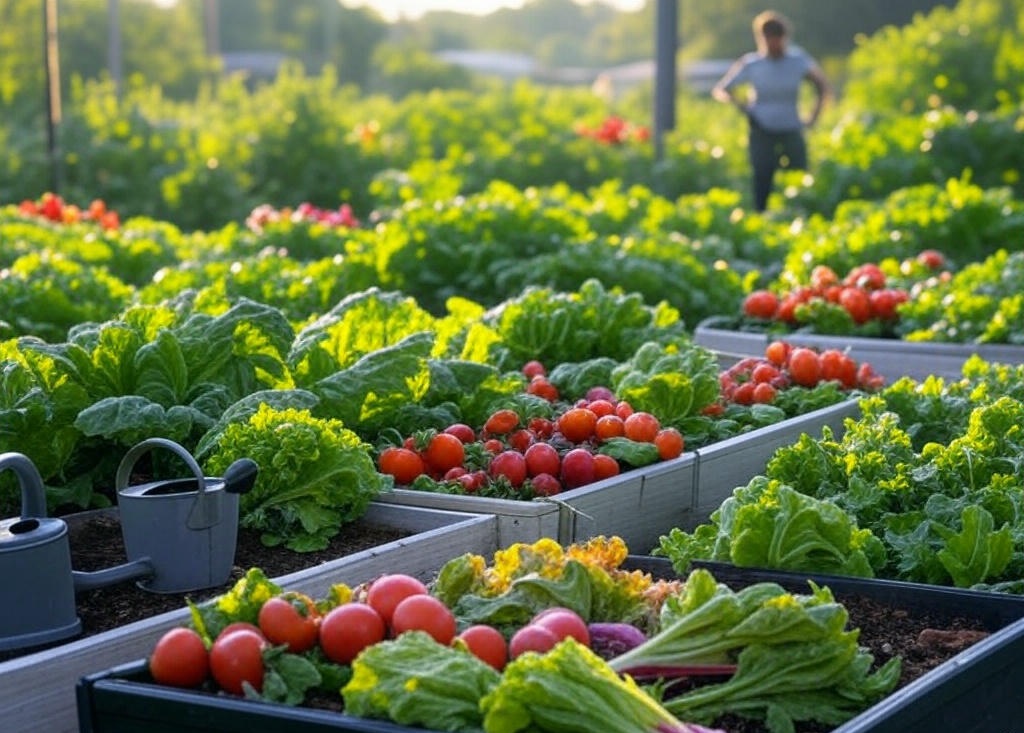Houseplants need different care throughout the year as light, temperature, and humidity levels shift. Adjusting your routine to match seasonal changes will help keep your plants healthy and thriving year-round.
Spring: Growth and Repotting Season
- Increase watering as plants come out of dormancy.
- Begin fertilizing with a balanced plant food.
- Repot root-bound plants and refresh the soil.
- Prune dead or damaged leaves to encourage new growth.
Summer: Managing Heat and Light
- Water more frequently, as higher temperatures dry soil faster.
- Provide shade or move plants away from direct sunlight to prevent leaf burn.
- Increase humidity with a pebble tray or misting.
- Watch for pests like spider mites that thrive in warm conditions.
Autumn: Preparing for Dormancy
- Reduce watering as growth slows down.
- Stop fertilizing to let plants rest.
- Move plants closer to windows to maximize natural light.
- Keep an eye out for seasonal pest infestations.
Winter: Low Light and Dry Air
- Water sparingly, only when the soil is dry.
- Use grow lights for plants that need more light.
- Keep plants away from cold drafts and heating vents.
- Maintain humidity with a humidifier or grouping plants together.
Final Thoughts
By adjusting your care routine each season, you can ensure your houseplants stay healthy all year. Observe their needs and make small changes to help them adapt to the environment!
